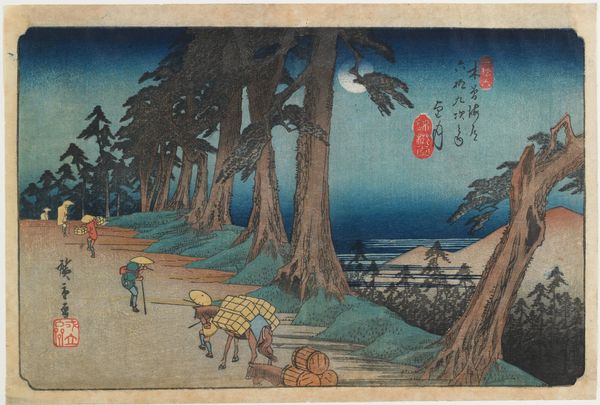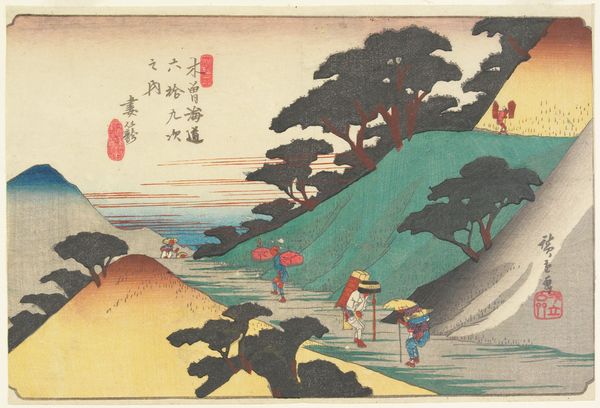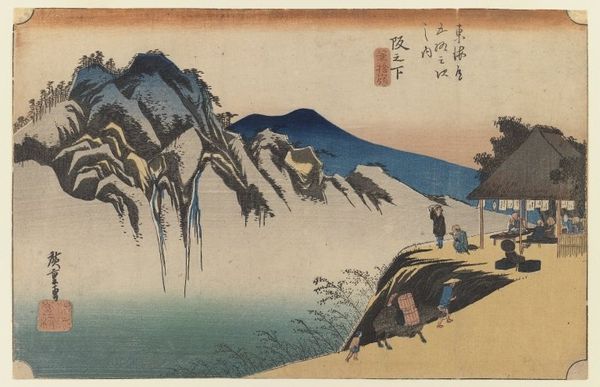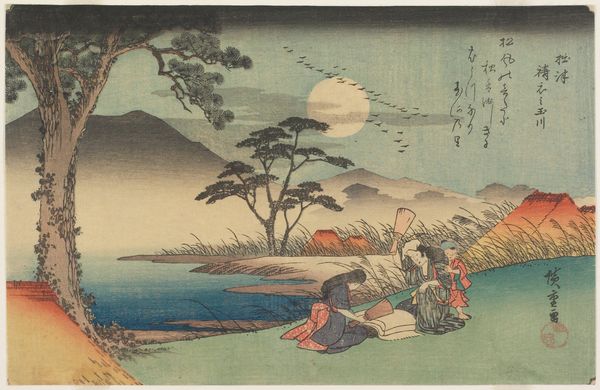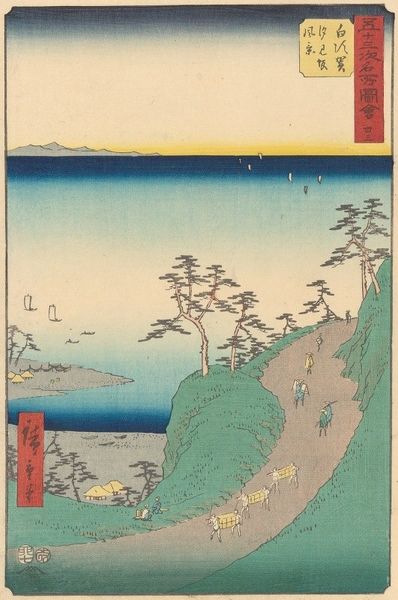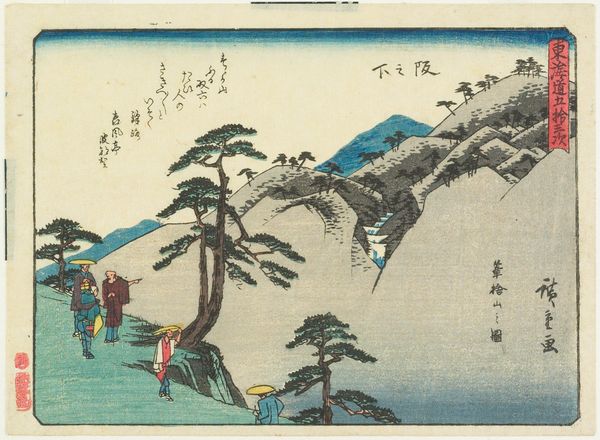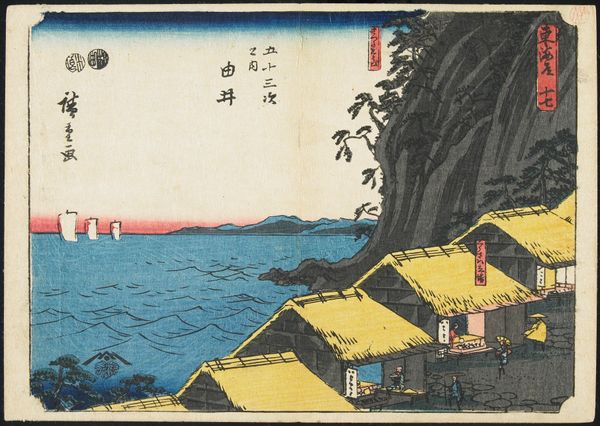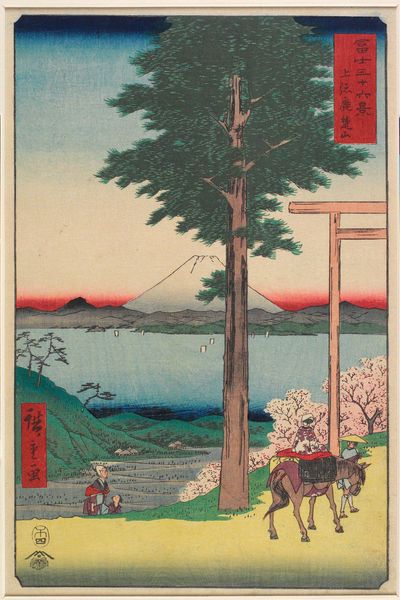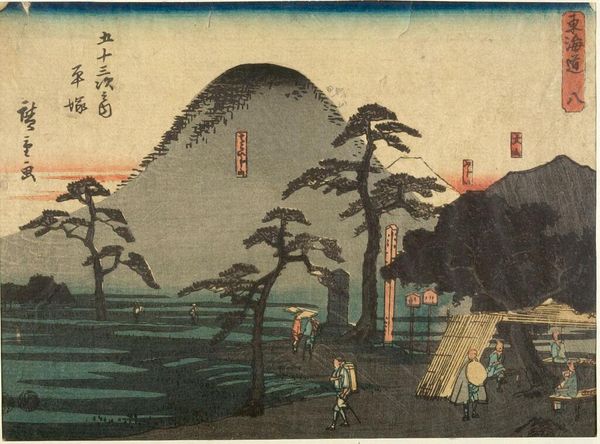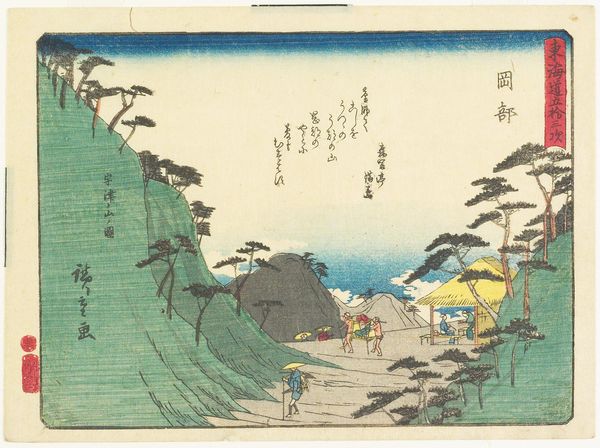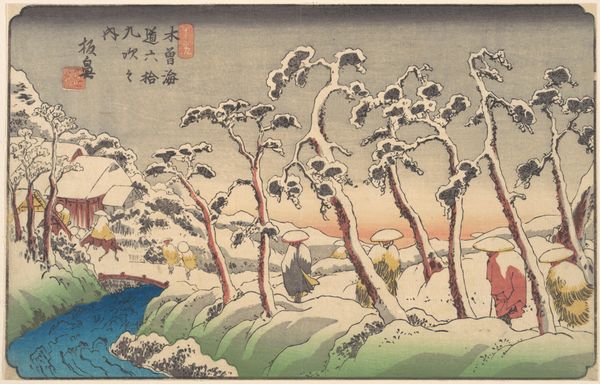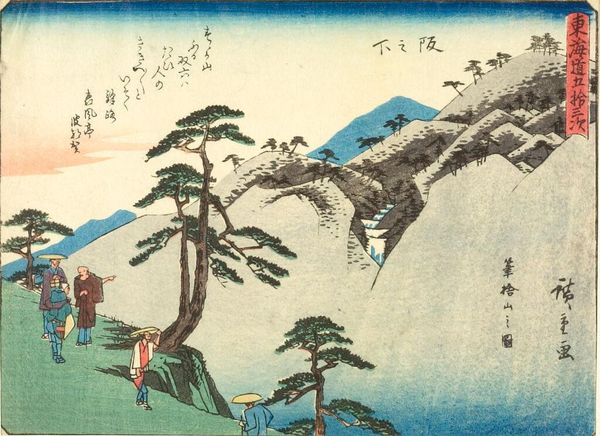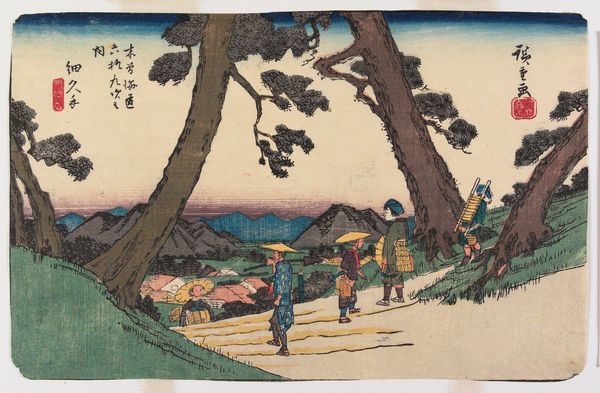
Nissaka: The Night-Weeping Stone at Sayo no Nakayama, from the series The Fifty-Three Stations of the Tōkaidō c. 1848 - 1850
0:00
0:00
Copyright: Public Domain: Artvee
Editor: So, this is Hiroshige's "Nissaka: The Night-Weeping Stone at Sayo no Nakayama," a woodblock print from the series "The Fifty-Three Stations of the Tōkaidō," dating to around 1848-1850. I'm struck by the composition. There’s this massive stone in the foreground and travelers on a dusty path, all set against a backdrop of stylized hills. What layers of meaning do you see at play in this seemingly simple scene? Curator: The simplicity is deceptive. Hiroshige was deeply engaged with the sociopolitical context of his time. Think about the Tōkaidō road itself; it was a vital artery for trade and political control, but also for the movement of ideas. This print isn't just a picturesque landscape. It also presents a narrative steeped in folklore and societal critique. Editor: Folklore? How so? Curator: The “Night-Weeping Stone” itself is a crucial entry point. Legend has it a pregnant woman was murdered near the stone, and her spirit weeps there at night. Consider this through a feminist lens. Is Hiroshige merely illustrating a ghost story, or is he offering a commentary on violence against women and the vulnerable within the strict social structures of Edo-period Japan? Editor: That’s a powerful interpretation! I hadn’t thought of it in those terms. I was just focused on the aesthetic qualities – the subtle gradations of colour, the almost flattened perspective. Curator: But those aesthetic choices reinforce the emotional weight. The muted tones, the oppressive presence of the stone, and the small figures of the travellers underscore a sense of melancholy and powerlessness in the face of larger forces. Does the stream of travelers represent the relentless march of commerce and the state? Editor: Now that you mention it, I do see a feeling of oppression present here! Curator: And how can that feeling connect with contemporary themes in a more connected world, now? The tension between modernization and local histories can be so painful... Thank you for your insights, this print is all the more impressive with them. Editor: This has really opened my eyes to seeing art not just as an object of beauty but as a reflection of social and political currents.
Comments
No comments
Be the first to comment and join the conversation on the ultimate creative platform.
